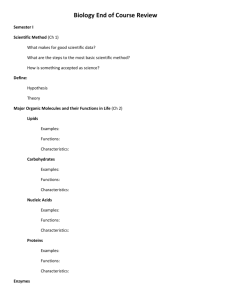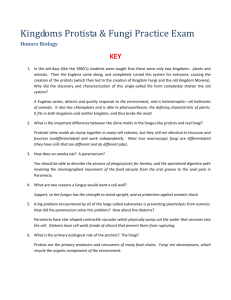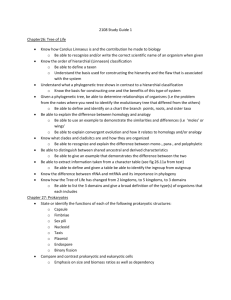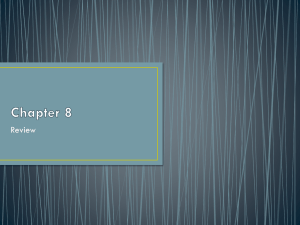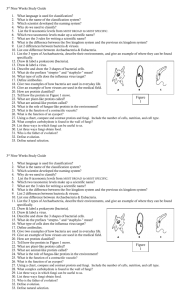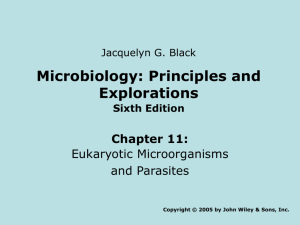- Teacher Tools
advertisement
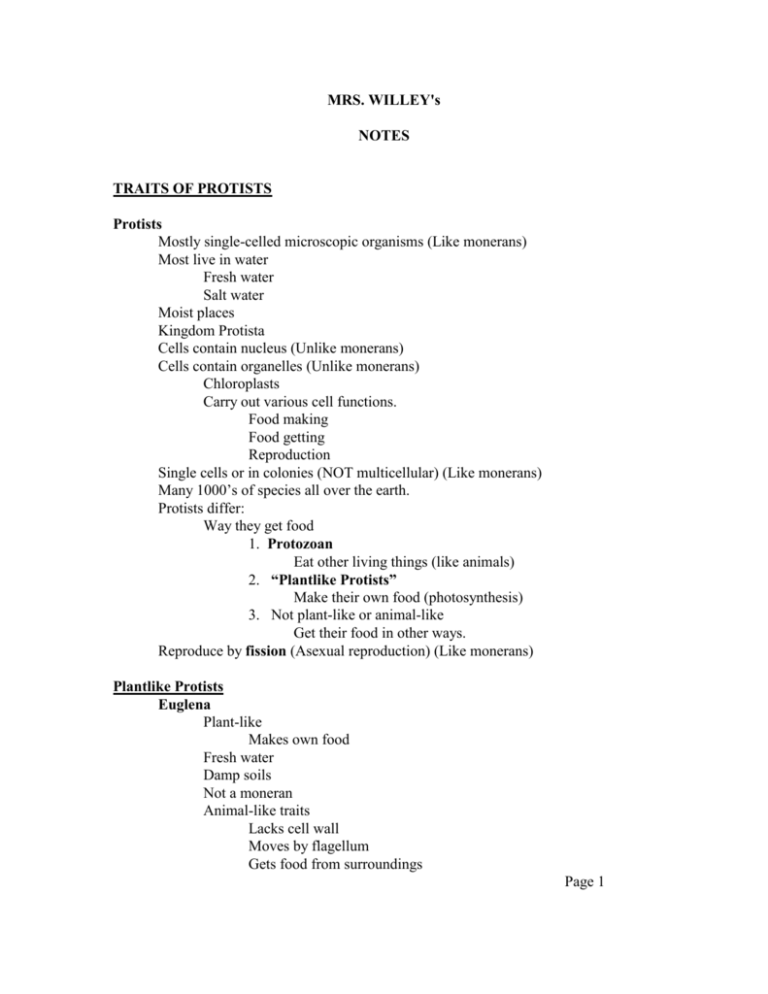
MRS. WILLEY's NOTES TRAITS OF PROTISTS Protists Mostly single-celled microscopic organisms (Like monerans) Most live in water Fresh water Salt water Moist places Kingdom Protista Cells contain nucleus (Unlike monerans) Cells contain organelles (Unlike monerans) Chloroplasts Carry out various cell functions. Food making Food getting Reproduction Single cells or in colonies (NOT multicellular) (Like monerans) Many 1000’s of species all over the earth. Protists differ: Way they get food 1. Protozoan Eat other living things (like animals) 2. “Plantlike Protists” Make their own food (photosynthesis) 3. Not plant-like or animal-like Get their food in other ways. Reproduce by fission (Asexual reproduction) (Like monerans) Plantlike Protists Euglena Plant-like Makes own food Fresh water Damp soils Not a moneran Animal-like traits Lacks cell wall Moves by flagellum Gets food from surroundings Page 1 Plantlike Protists CONT. Diatoms Fresh water Salt water Plant-like Protists Surrounded by cell wall Glassy (wall) 2 part shell Fit together like a box & top Does not have a flagellum Exists in great numbers in the ocean Carry photosynthesis Releases oxygen into the water Used by other organisms Diatomaceous Earth Dead diatom loose shells collected on bottom of the ocean Powdery sustance Gritty texture Used in making Toothpaste Scouring powders Used in filters (pools) Dinoflagellates Plant-like protists Lives mainly in salt water Has 2 flagella for movement Contain pigment Chlorophyll. Red Some release poisons into water. Make water turn red “Red Tide” Causes many fish to die Shellfish store poison in their body People who eat these shellfish become ill. Page 2 Animallike Protists Page 3 Protozoans No chloroplasts Get food from other organisms Many varieties exist Classified into 4 groups Flagellates Use flagella for movement Most live inside other organisms Use food produced by these organisms Some useful to animals they live inside Intestines of termites Help termites digest wood Some cause harm to the animals they live inside Trypanosome (Parasite) Live in the blood of Insects Animals Humans Cause diseases African Sleeping Sickness Amoebas 1. Pseudopod Fingerlike extension of cytoplasm Used in moving and feeding Moves the cell forward Formed by the amoeba 2. Amoeba Freshwater Protozoan Moves by pseudopods No definite shape Shape changes as it forms new pseudopods Food and water are held in Food Vacuole Organelle Food is digested. Then wastes are released from cell. Live in dried up Ponds in drought conditions: Amoeba forms into a ball Develops a thick protective coating (Cyst) Can survive Dryness Extreme temperatures Become active when favorable conditions return Amoebas CONT Most are harmless Few types can cause disease Amoebic Dysentry Parasites Live in human intestines Spread by drinking water polluted with human wastes with amoebas 3. Ciliates Cilia Short hair-like structures used for movement Shorter and more numerous than flagella Paramecium Slipper-shaped protozoan has cilia Can reproduce by fission Can reproduce sexually (Conjugation) 2 organism (paramecia) join exchange nuclear material Cilia beat together in rhythmic manner Causes organism to move Moves food into Oral Groove Cilia-lined channel Food passes to the mouth Carries food from surroundings Food enclosed inside food vacuoles Undigested food goes out Anal Pore Contractile Vacuole Releases from the cell Extra water Liquid wastes Looks like a star 4. Sporozoans Protozoan No means of movement Sometimes forms Spores Asexual reproductive cell Thick protective coating Many are disease causing parasites Malaria Carried by mosquitoes Spends part of its life as an insect Spends part of it’s life inside the human body. Page 4 Traits Of Fungi Fungus Yeasts Mushrooms Molds Kingdom Fungi Organism that lacks chlorophyll Produces spores Absorbs food From living Once-living Certain plantlike traits Do not move Cells have walls Differ from plants Can not make own food Cell wall made of different materials than plants Must get their food from living things Are not animals Digest food differently than animals Fungi releases Enzymes into their food source Breakdown large molecules of food into smaller molecules. Absorbs the digested foods Grows best in warmth & moisture (such as soil) Can be found inside tissues of animals and plants (See parasites) Most fungi are saprobes Recycle matter in our environment Divided into 3 main groups Threadlike fungi Sac fungi Club fungi Threadlike Fungi Forms in fine threads Form fluffy, cottony masses Black mold on bread Hyphea Grow end to end Form threadlike structures Fluffy Cottony Some are root-like Grow downward Carry food to other parts of the fungus Some grow upward with tips (Spore Cases) Filled with spores Most grow in soils as saprobes Feed on dead leaves & remains of living things Some are disease causing Parasites Harm Insects and plants Downy Mildews Damages fruit trees Sac Fungi Fungus that forms reproductive cells or spores within sacs. Yeast Many shapes Many sizes Single-celled microscopic yeast Large morel size like mushrooms Some can be eaten Produce spores in sacs Some are Saprobes Some are Parasites Cause disease in Plants & Animals Ringworm (Animals0 Athlete’s foot (Animals) Dutch Elm Disease (Plants) Powdery Mildew Saprobes that damage Clothing Paper Wood Page 5 Sac Fungi CONT Useful to people Oranges produces the antibiotic penicillin Cheese Yeasts (most useful of all fungi) Uses sugar as source of energy Fermentation Gives of alcohol & Carbon Dioxide Gas Fermentation Used in cooking Wine Yeast acts on grape juice sugar Ferments the juice into alcohol Form spores as means of reproduction (Budding) Asexual reproduction Reproduce mostly from budding Club Fungi Club Fungus Forms spores on microscopic on club-shaped stalks




